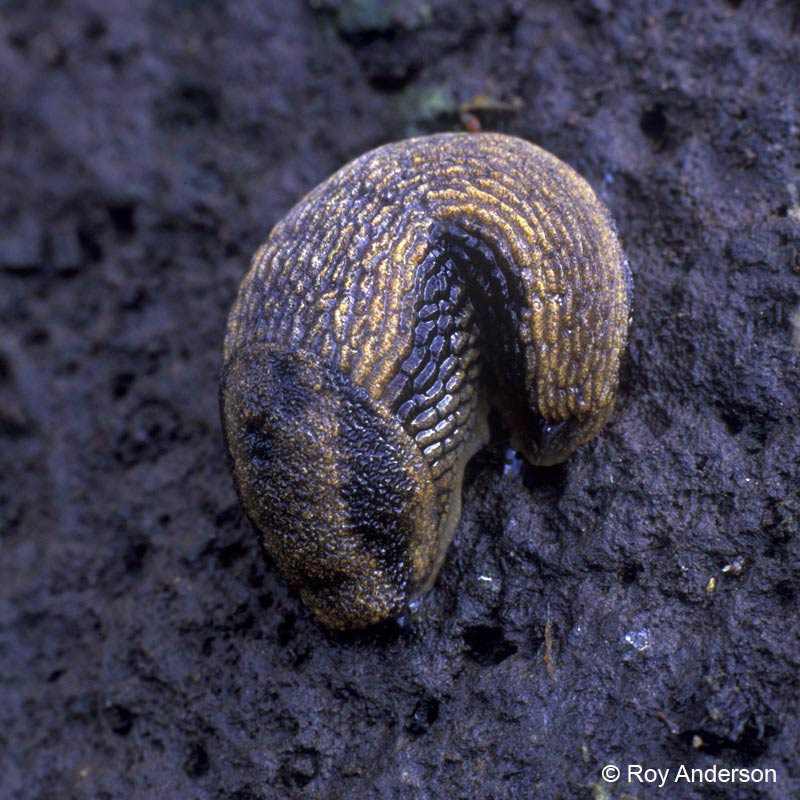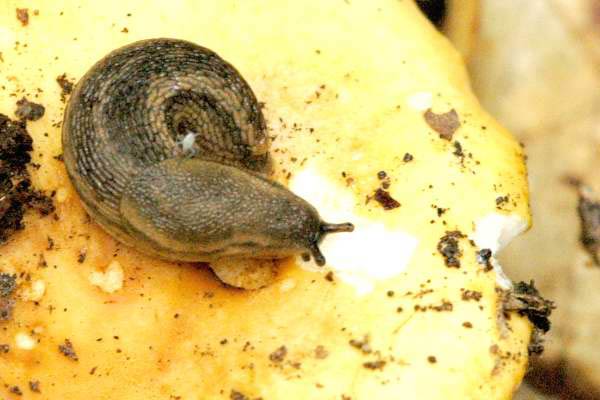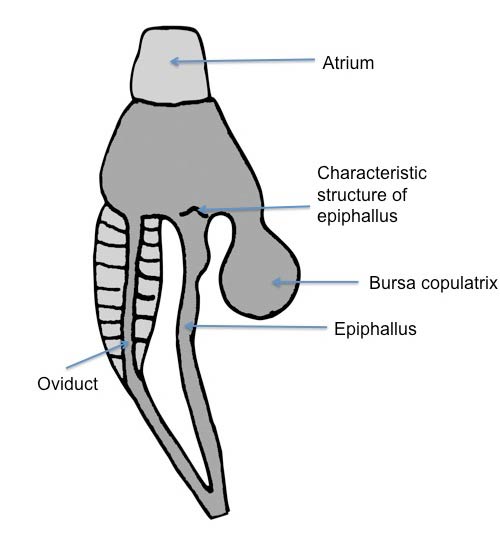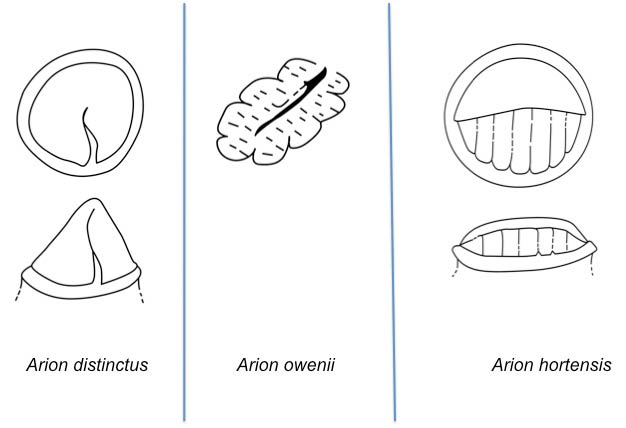Arion hortensis group: Arion distinctus
|
Arion distinctus. (Photo: © Dr. Roy Anderson, MolluscIreland) |
|
Arion distinctus. (Photo: © Dr. Roy Anderson, MolluscIreland) |
|
Arion distinctus. (Photo: © Dr. Roy Anderson, MolluscIreland) |
|
Arion distinctus. (Photo: © K. Ovaska, CalPhotos) |
|
Arion distinctus. (Photo: © J.K. Lindsey, The Ecology of Commanster) |
|
Arion distinctus: juvenile. (Photo: © J.K. Lindsey, The Ecology of Commanster) |
|
Arion distinctus: genitalia. (Photo: © Kerney et al. 1983 modified by K. Weigel, University of Florida) |
|
Arion hortensis group: epiphallic structures. (Photo: © Davies(1977) and Forsyth(2009) modified by K. Weigel, University of Florida) |
Family
Arionidae
Species
Arion distinctus Mabille, 1868
Common name
Dark-face arion
Description
This slugSlug:
A snail that either does not possess a shell or has one that is very reduced (no definite coiling) or internal.
belongs to a species-complex called the Arion hortensis group, which is comprised of Arion hortensis, A. owenii and A. distinctus. The Arion hortensis group is typically 25-35 mm long, and is only distinguished by the morphology of the genitaliaGenitalia:
The reproductive structures of an animal. May refer to either male or female structure.
. These slugs have two color morphs (dark grey or bluish grey ) that are more common than the brownish morph. They possess dark lateral stripes, where the stripe on the right side of the animal encompasses the pneumostomePneumostome:
This is the breathing hole on the right side of the mantle of molluscs. This allows air to pass through to the lung for gas exchange.(See also breathing pore).
(breathing pore). Like the body, the tentaclesTentacles:
Sensory projections on the head end of a mollusc. There are generally two pairs; upper (posterior) and smaller, lower (anterior). The upper pair bears the eyes. In many snails the eyes are located at the tips of this structure; however, in Basommatophoran snail species, the eyes are located at the base of the tentacles.
are bluish grey with a contrasting pale yellow or orange sole. The animals have no keelKeel:
Also known as the carina. This is a longitudinal ridge that runs dorsally along the apex of the tail of the animal.
. Contracted specimens are rounded in cross-section. This group has a characteristic yellow-orange mucus. Molecular techniques can also be used to identify members of this group.
Genitalic characters used to distinguish the three species:
Arion distinctus: epiphallic structure conicalConical:
Shell shape: shells with an elongated spire that tapers to a point and are slightly broader at the base.
in cross-section, and covers the entire opening of the epiphallus.
Arion hortensis: epiphallic structure raised with "finger-like" projections, and only partially covers the opening of the epiphallus.
Arion owenii: epiphallic structure flattened and irregularly shaped, and does not cover the opening of the epiphallus.
Native range
Western Europe
Distribution
North America:
- U.S.: California, Pennsylvania
- Canada: Vancouver, Southern Vancouver Island, Halifax, near Ottawa and Kingston
Australasia: New Zealand
Europe
Ecology
This slugSlug:
A snail that either does not possess a shell or has one that is very reduced (no definite coiling) or internal.
consumes agriculturally important crops and often inhabit disturbed sites (e.g., gardens, roadsides). Arion hortensis and A. distinctus reproduce by cross fertilization. The means by which A. owenii reproduces has not been documented. In England, A. hortensis mates in the fall and winter while A. distinctus mates during spring and summer months. They can live up to one year.
Synonyms
- Arion hortensis of authors in part, not Férussac, 1819
- A. hortensis form 'A' of authors.
References
Davies 1977Davies 1977:
Davies, S.M. 1977. The Arion hortensis complex, with notes on A. intermedius Normand (Pulmonata: Arionidae). Journal of Conchology 29: 173-187.; Davies 1979Davies 1979:
Davies, S.M. 1979. Segregates of the Arion hortensis complex (Pulmonata: Arionidae), with the description of a new species, A. owenii. Journal of Conchology 30: 123-127.; Grimm et al. 2009Grimm et al. 2009:
Grimm, F.W., R.G. Frosyth, F.W. Scheler and A. Karstad. 2009. Indentifying land snails and slugs in Canada. Introduced species and native genera. Canada Food Inspection Agency. Ottawa, ON. pp. 1-168.; Horsák et al. 2004Horsák et al. 2004:
Horsák, M., L. Dvorák and L. Juricková. 2004. Greenhouse gastropods of the Czech Republic: current stage of research. Malacological Newsletter 22: 141-147.; Hunter 1966Hunter 1966:
Hunter, P.J. 1966. The distribution and abundance of slugs on an arable plot in Northumberland. Journal of Animal Ecology 35(3): 543-557.; Iglesias and Speiser 2001Iglesias and Speiser 2001:
Iglesias, J. and B. Speiser. 2001. Distribution of Arion hortensis s.s. and Arion distinctus in Northern Switzerland. Journal of Molluscan Studies 67: 209-214.; Kantor et al. 2009Kantor et al. 2009:
Kantor, Y.I., M.V. Vinarski, A.A. Schileyko and A.V. Sysoev. 2009. Catalogue of the continental mollusks of Russia and adjacent territories. Version 2.1. (Accessed online July 20, 2010); Roth and Sadeghian 2006









